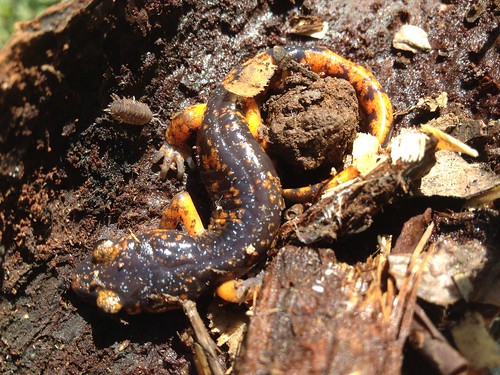Signs of spring are everywhere. The shiso and epazote self sowed as I hoped, and are popping up all over the place. The almond and Felix Gillet quince are waking up, as are the pomegranates, grapes, kiwis, figs, nectarine, peach, Asian pear, asparagus, rhubarb, and saskatoons.
Have a look at this handsome beast, unearthed in the process of moving some piles of bark and wood chips. I think it’s probably Ensatina eschscholtzii platensis, the Sierra Nevada Ensatina.

I used the aforementioned bark to mulch some paths out in the food forest, to help alleviate soil compaction and maintain soil moisture. I’ve been working on building out the herbaceous layer, and seeded toothache plant, yarrow, feverfew, mugwort, chamomile, mountain mint, catmint, catnip, sorrel, sage, cumin, papalo, pimpinella, stinging nettle, hyssop, dill, celeriac, lovage, and garden cress in speedling trays, and red clover, daikon, hollyhock, yarrow, salsify and columbine directly into the food forest. I also planted mashua tubers, and relocated some strawberries, horseradish, comfrey, mint, and lingonberries into the partially shaded area just inside the tree line. Some perfectly timed rain in the forecast for the end of the week should provide lots of moisture for emerging seedlings and spring ephemerals.


One Response to Lungless Salamander with Herbs